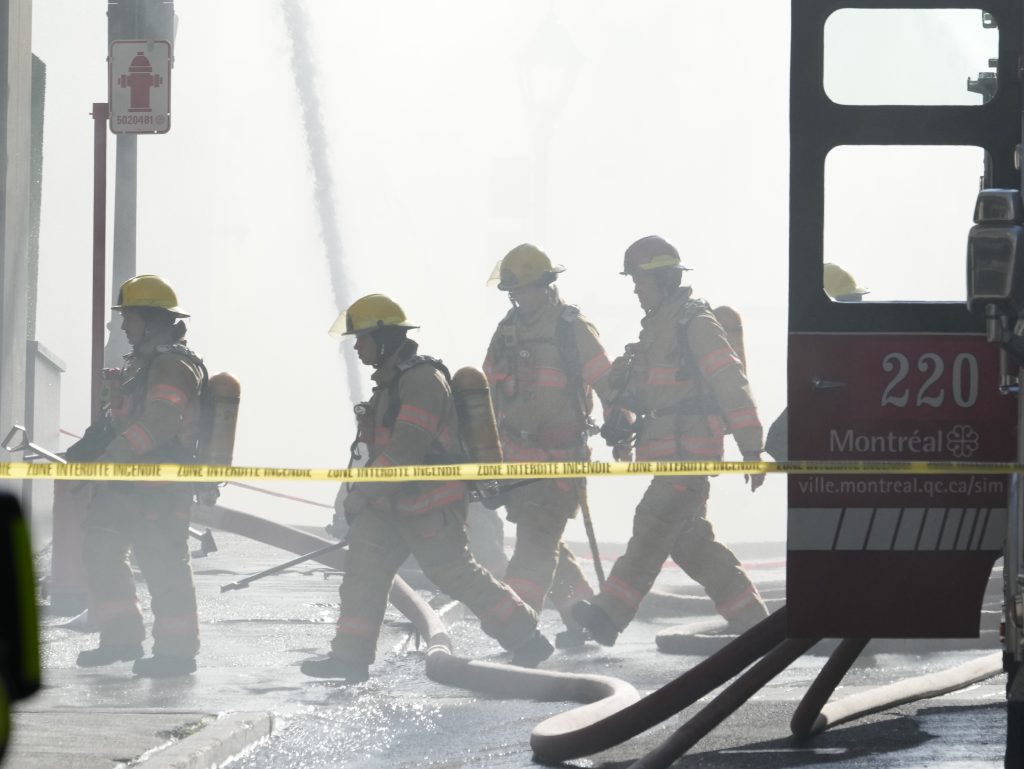Cancer in firefighters: more work remains to be done to improve their fate

Posted January 8, 2025 11:34 am.
Firefighters are often portrayed as brave men and women fighting fires at the risk of their lives. However, the greatest danger to firefighters is not the flames: it is the cancer associated with chemicals and smoke.
Since 2024, January has been Firefighter Cancer Awareness Month in Canada as cancer is the leading cause of death among firefighters.
According to Health Canada, firefighters have a 14% higher risk of death from cancer than the general population. Canadian workers’ compensation claims data indicate that cancer accounts for more than 85% of firefighters’ claims for line-of-duty deaths.
The increased risk of being diagnosed with cancer — 9% higher among firefighters than the rest of the population — is explained in part by the fact that firefighters are often exposed to smoke from fires as well as toxic chemicals released by burning materials and firefighting foams.
“This is unacceptable. Every day, firefighters put their lives on the line to protect our communities, so we must protect them too,” federal Health Minister Mark Holland said in a statement Monday.
According to Chris Ross, president of the Montreal Firefighters Association and the Regroupement des associations des pompiers du Québec (RAPQ), “there is still a lot of work to be done to improve the prevention, screening and management of this disease.”
There are, in particular, disparities in the recognition of cancers that may be linked to the work of firefighters. Quebec recognizes nine types of cancer linked to this profession: lung, kidney, mesothelioma, bladder, larynx, myeloma, non-Hodgkin’s lymphoma, skin and prostate. Ross specified that six other types of cancer, including leukemia, brain and breast cancer, should be added to Quebec’s list during the year 2025.
Ontario recognizes more than twice as many cancers presumably related to firefighter work as Quebec, including ovarian, thyroid, cervical, penile and pancreatic cancers. The country’s leader is Saskatchewan with 22 recognized cancers.
According to the Ontario government, an average of 50 to 60 firefighters die of cancer each year in Canada, and half of them are from Ontario.
Improving protective clothing
Ross believes that the focus now must be on developing better equipment. He said that many chemical contaminants present in firefighters’ workplaces are absorbed through the skin. In addition, firefighters’ protective clothing contains chemical components to protect them from heat and make them more waterproof, but these components are carcinogenic.
“We’re going to have to find a way to prevent contaminants from passing through the skin. Unless in the future we identify another risk that we don’t know about, today it’s really through the skin and there’s no solution for that yet,” said Ross.
In his statement, Minister Holland noted that last October, he tabled the National Framework on fire-related cancers, which is the result of consultations with firefighter organizations, health care providers, and Indigenous partners, among others. This initiative aims for Health Canada to improve access to cancer prevention and treatment services for firefighters.
Along with the Framework, the federal government announced $12 million in funding to improve firefighter health and safety. This funding will include creating a firefighter cancer registry, led by Statistics Canada, to fill data gaps.
–This report by La Presse Canadienne was translated by CityNews








